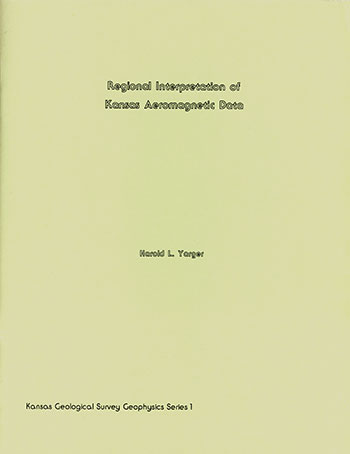Regional Interpretation of Kansas Aeromagnetic Data
DOI:
https://doi.org/10.17161/kgsbulletin.no..23539Abstract
The Kansas Geological Survey has completed a 72,000 line-kilometer aeromagnetic survey of Kansas. The map of total-intensity-magnetic-field contours provides, along with spectrally filtered versions, a better understanding of basement composition and paleotectonics within the state.
The magnetic data indicate that the southern part of the Proterozoic Central North American Rift System (CNARS) does not terminate in central Kansas, but continues along a southeastern trend to at least the Kansas-Oklahoma border. Some of the current seismicity within the State appears to be correlated with reactivated faults within the CNARS.
A distinct (paleoplate?) boundary between the 1600-1700 million year (m.y.)-old-mesozonal granitic terrane to the north and the ~1400 m.y.-old-epizonal granitic terrane to the south is indicated in central Kansas.
Numerous highly magnetic, shallow, granitic plutons, several known from drilling to be ~1350 m.y. old, are intruded into the older granitic crust in northeastern Kansas.
Downloads

Downloads
Published
Issue
Section
License
Copyright (c) 2025 Harold Yarger

This work is licensed under a Creative Commons Attribution-NonCommercial 4.0 International License.
